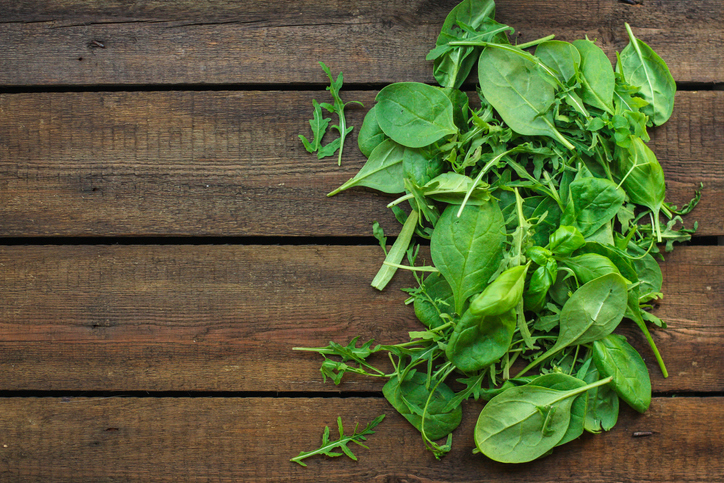
Produce 101: Tender Greens
Looking to add more volume, flavor, and texture to your plate? Consider adding greens. But not just any greens–tender greens.
Produce 101: Tender Greens
What are tender greens? Well, they aren’t lettuces or braising greens, and they are typically used raw or wilted. They range in flavor from mild-almost-neutral, to pungent, spicy, or peppery.

Spinach is a Tender Green
Spinach is a great example of a tender green. In fact, spinach is the only tender green that has a USDA spec.
Spinach Grades
- U.S. Extra #1
- U.S. #1
- U.S. Commercial
Grades are based mainly on color and uniformity of shape, but also importantly: mechanical damage. You may wonder what that is, and really, it’s just what it sounds like.
During the harvest, the harvesting blades may be a little dull or the leaf may be a little crispy, or as it’s being washed and cooled in the post-harvest operation, the leaves can get damaged. It doesn’t affect the quality and flavor, but it does decrease and diminish the shelf-life just a little bit. If you are looking to use whole leaves, set these aside, they can still be used in a sauce or cooked.
Spinach Comes in Two Main Forms
We have the full-size spinach image below, and the baby spinach image above.
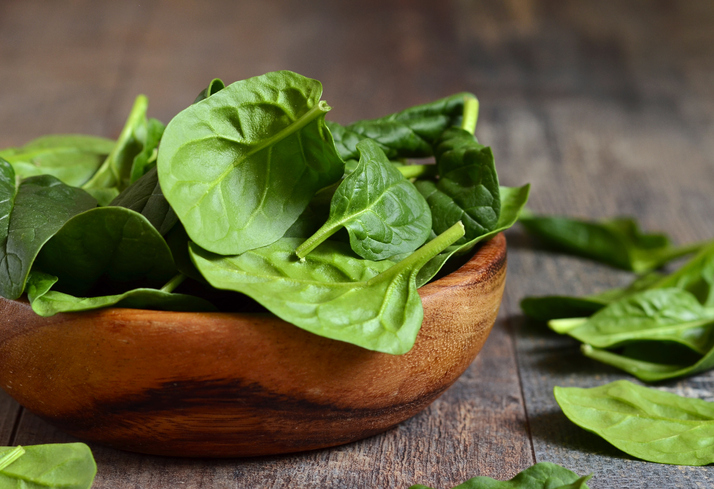
The differentiator between the two clearly is the size.
- Baby spinach is perfect for your salads. It is tender, the stems are delicate, and they can be used where a more tender texture is preferred.
- Full-size spinach is typically cooked—you can cook it really fast with a little olive oil, add handfuls to soup, or it can be braised.
Full-sized spinach can be used raw, but it really shines better cooked. Full-size spinach sizes can range dependent on when it is harvested. You may see it just past the baby stage, all the way to fully mature with bunched stems.
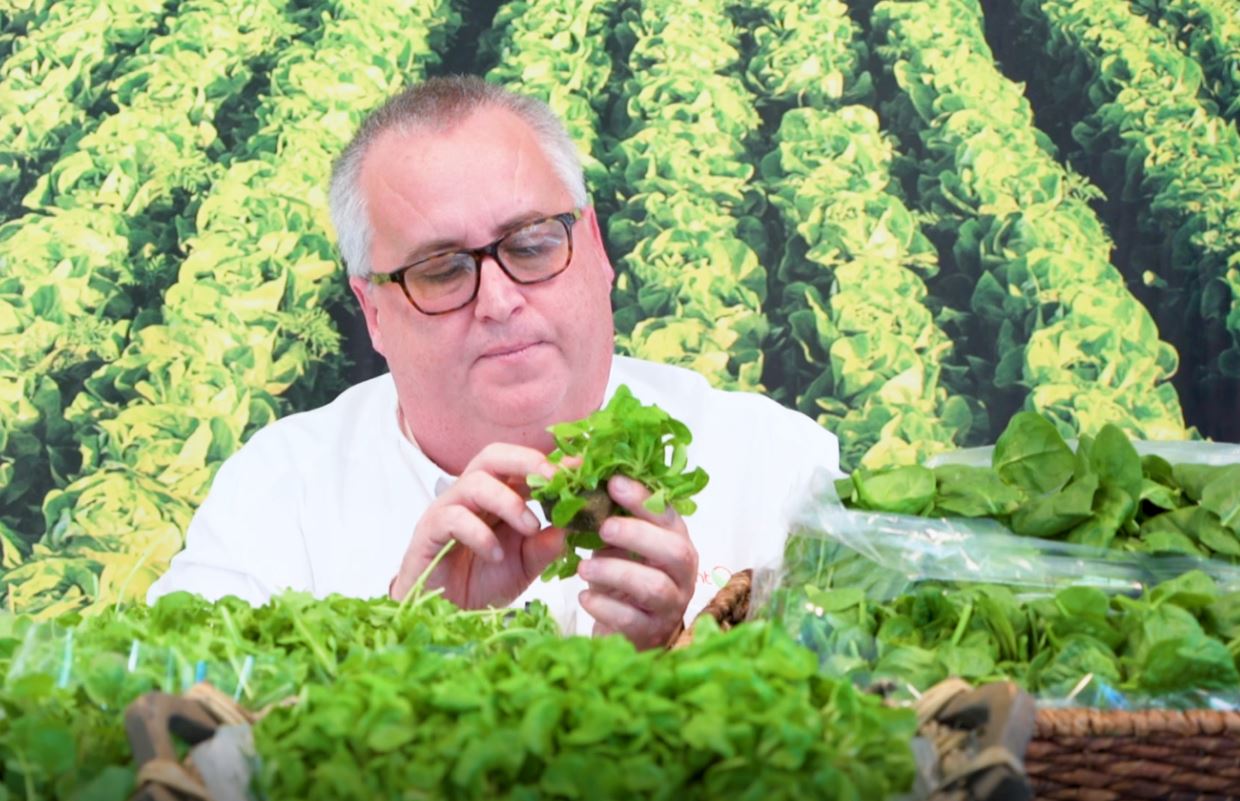
Another Type of Tender Green: Mache
We will go from mild to most flavorful, starting with Mache, which is also called Lamb’s Lettuce or Corn Salad. Mache is incredibly tender with soft, velvety leaves, and as such it is best used raw. You don’t often put an undressed green on a plate, so toss it with a lightly flavored oil or a mild vinaigrette, salt, and pepper. If you use a heavier dressing, it might not stand up on the plate since the leaves are so delicate.
Mache is a very old green. It is almost neutral flavored, it goes really well with delicately-flavored proteins or vegetables. More often than not, it comes attached to its root bulb in a plug (as seen in the picture above). This increases the shelf-life and holds that flavor and color a little bit longer. All you need to do it right before you use it, is snip it off, and you are ready to go.
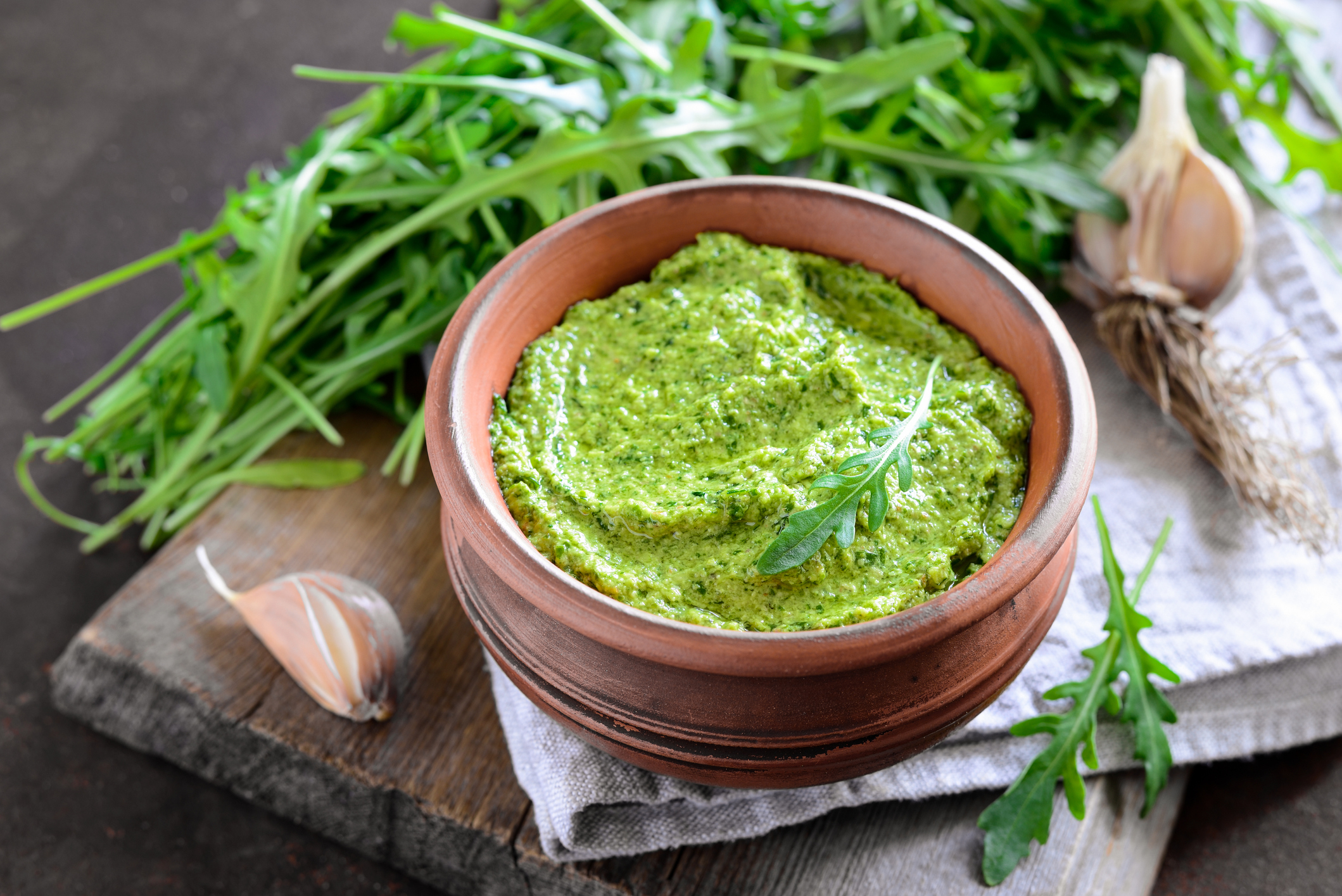
A Robust Flavored Tender Green: Arugula
Next, we have arugula, it has a little peppery bite to it at the end. It’s great wilted, it really shines as a center of the plate green item, not necessarily just as a salad. Consider setting your grilled fish on top of raw, vinaigrette dressed arugula. The residual heat will wilt it down just a little bit.
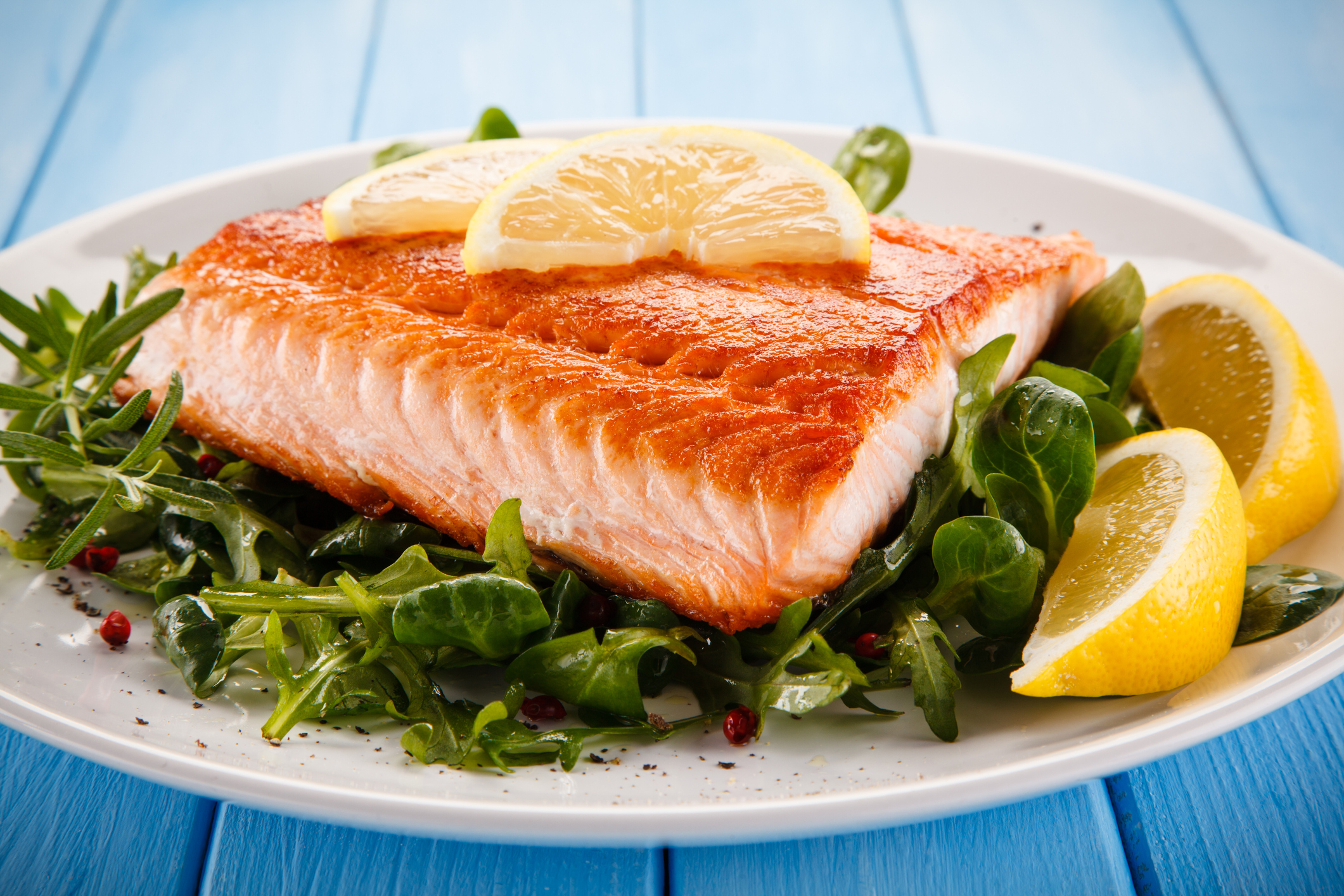
It also makes a wonderful pesto. Try it if you’ve got some and you are a little long on your arugula, throw it in your blender with a little olive oil, some parmesan cheese or Grana Padano cheese, pine nuts, walnuts–even pecans will work. Grind it up, blend it, you’ve got a great new flavorful pesto to use.
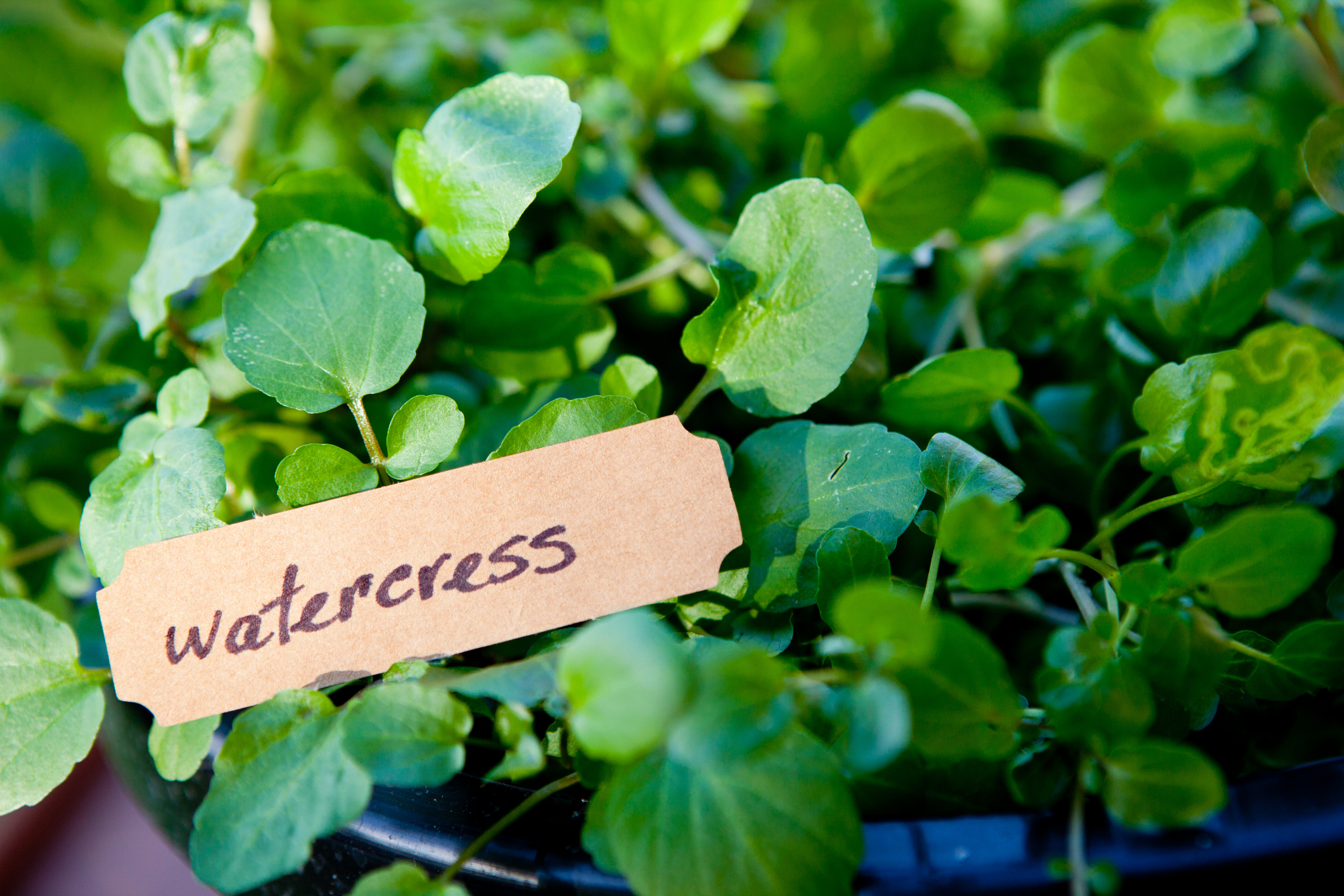
Watercress and Upland Cress
We have the familiar watercress (pictured above). It’s a little spicier than arugula, and then we have watercress’ close cousin, Upland cress pictured below.
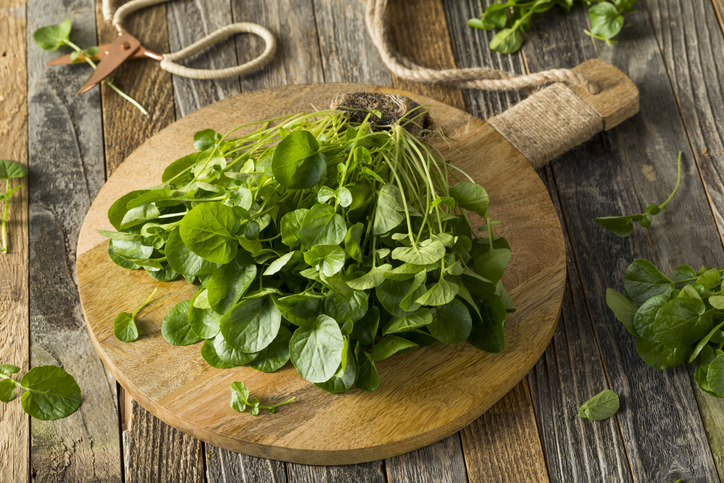
These two greens are usually used raw and are known for adding a peppery bite to dishes.
Upland cress, much like Mache, typically comes on the root plug (pictured above). It’s a little more vibrantly flavored from the watercress, it’s got more of a punch and an almost horseradish-like finish and works wonderfully with grilled meats and seafood.

Baby Kale Mix is a Terrific Tender Green
Last but certainly not least for Produce 101: Tender Greens, one of the hot newer items is baby kale mix. Kale is recognized as a superfood for its nutrient qualities. Baby kale would be perfect as an alternative to a traditional Caesar salad. It’s just tender enough that you can eat it raw, but it has enough bite and enough crunch that it adds a layer of texture to your traditional Caesar salad.
Produce 101: Tender Greens — Storage and Handling
When storing tender greens, you want to keep them cold. Don’t let them get below 32°F, that’s sort of the magic number, if they freeze, they are ruined. The cell walls rupture and break, the leaves break down, they just don’t hold up.

Keep your tender greens dry and wash them just before using them. They don’t like to sit damp. So keep them in the back of your cooler, covered. You don’t want them to get dehydrated.
Don’t stack heavy items on top, as they are susceptible to bruising and damage. Only take out what you need to use at each time. Minimize the amount of times you touch the leaves, because every time you touch them, you run the risk of bruising.
Watch Dan go over the basics of tender greens in Produce 101: Tender Greens.
Contact your Sales Consultant about adding tender greens to your next order. If you are not a customer, find out how to become one today!
Content provided by Chef Daniel Snowden, the Director of Culinary Development for FreshPoint Central Florida. He has been in the produce industry almost 20 years and loves getting geeky about food. Additional contributions by Lisa Brizard.
Some tools you can use:
Visit freshpoint.com for our seasonal availability guides—and while you are there, check out the FreshPress, our latest market report. Place your orders online with ease at myfreshpoint.com. Did you know you can receive real-time reliable delivery alerts on the day of your delivery? Activate and subscribe at FreshPoint.com/mydelivery
Download our app and take your produce management on the go. Place orders, review flyers, watch videos…all in one spot!
Find out more details about our UBU program, and how we are shining a spotlight on food waste while making value and food safety a priority.
We buy local to strengthen regional economies, support family farms, preserve the local landscape, and to provide fresh-from-the-farm food to our customers. Local.freshpoint.com connects you to your local farmers like never before! Customize your search by zip, city, state, radius…even by crops and growing methods. Pop in your zip code and learn about our local farmers.
Socialize with us!
Did you know we are on YouTube? Head over to our page and check out our 75+ videos. Don’t forget to subscribe, and also be a part of our Bell Team—hit the little bell icon to get notifications when we upload new videos.
Follow FreshPoint, Inc. on Facebook, Twitter, Instagram, and LinkedIn…and follow The Produce Hunter on Instagram as she finds the best specialty produce at the Santa Monica Farmers Market.

